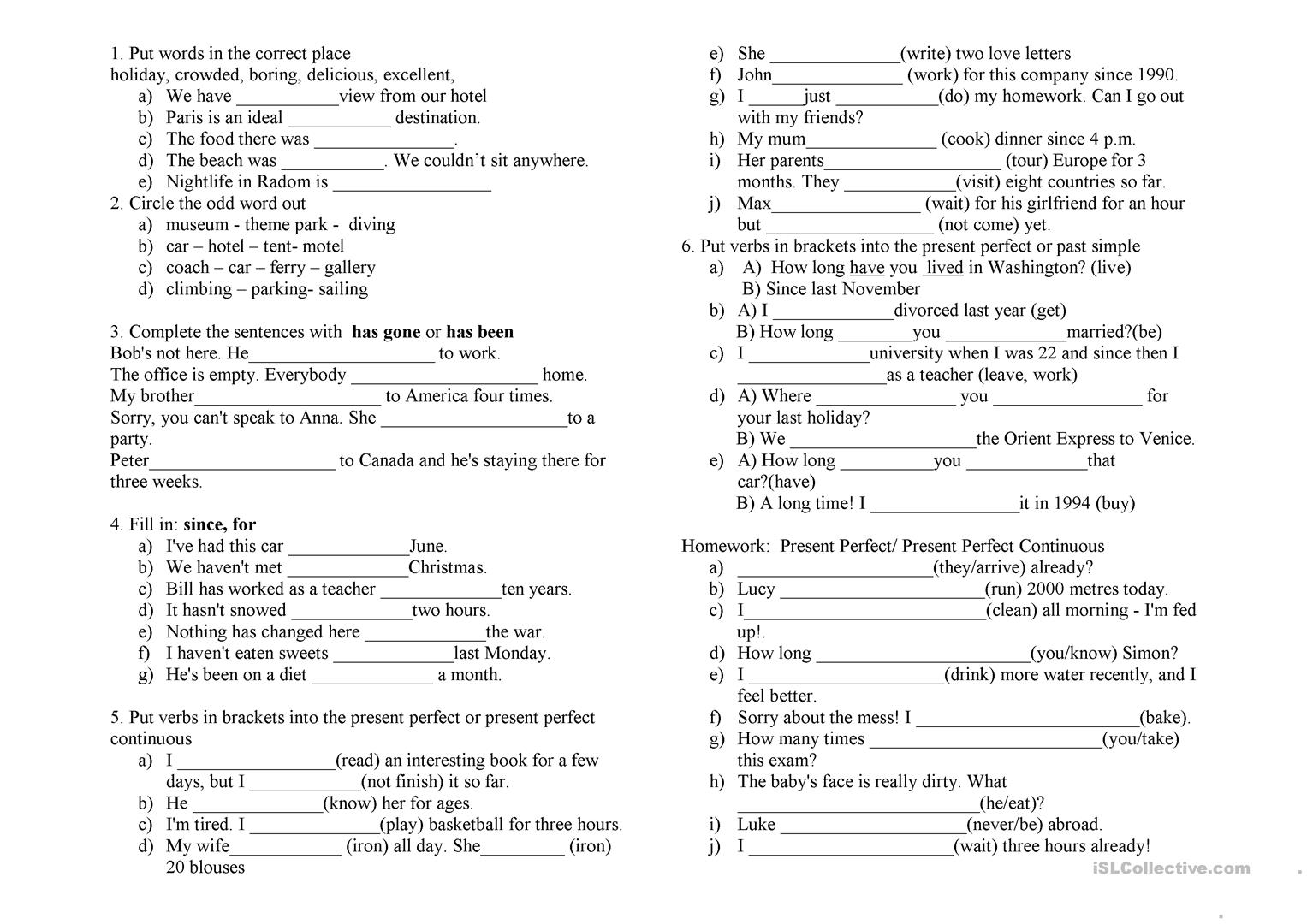
Present Perfect Simple Vs Present Perfect Continuous Worksheets
Perfect English Grammar Choose the present simple or the present continuous. Try another exercise about the present continuous and present simple here Try this exercise in video here Click here to review how to make the present continuous. Click here to review how to make the present simple. Click here to return to the list of grammar exercises.

Present Perfect Simple and Continuous interactive and downloadable
We use the present perfect continuous to talk about ongoing events or activities which started at a time in the past and are still continuing up until now. Compare Compare Sometimes we can use either form and the meaning is the same: I've lived here for 20 years. I've been living here for 20 years. Warning:

English Intermediate I U10 Present Perfect Continuous VS Present Perfect
We use the present perfect simple to focus on the result of an action, and we use the present perfect continuous to focus on the doing of the action itself. I've been practising this piece for weeks but still haven't learned it. We use the present perfect simple to talk about how much or how many.

Present Perfect Continuous Tense in English English Study Here
Choose the correct answers to complete the article. Use the present perfect continuous where possible. German sailors a bottle containing a message on a postcard which was thrown into the Baltic Sea 101 years ago. It is believed that this is the oldest message in a bottle that the world . The bottle any damage, despite floating in the sea for.
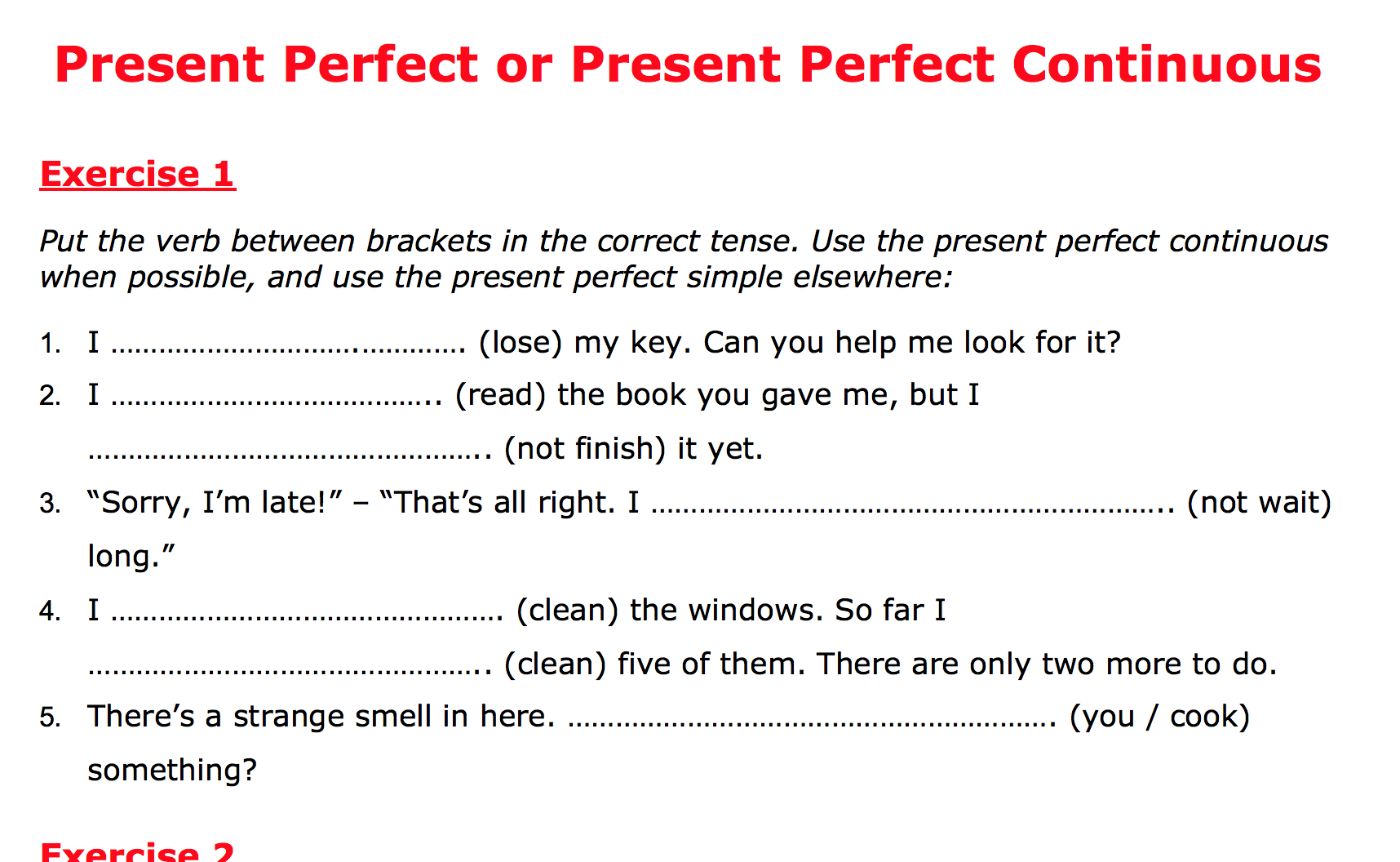
Present Perfect Simple Or Continuous Exercises Pdf Rila Media
1: The present perfect continuous can be used to emphasise the length of time that has passed. The present perfect simple is generally neutral: They've been waiting for hours! (This emphasises the length of time). They've waited for hours. (This doesn't emphasise the length of time).
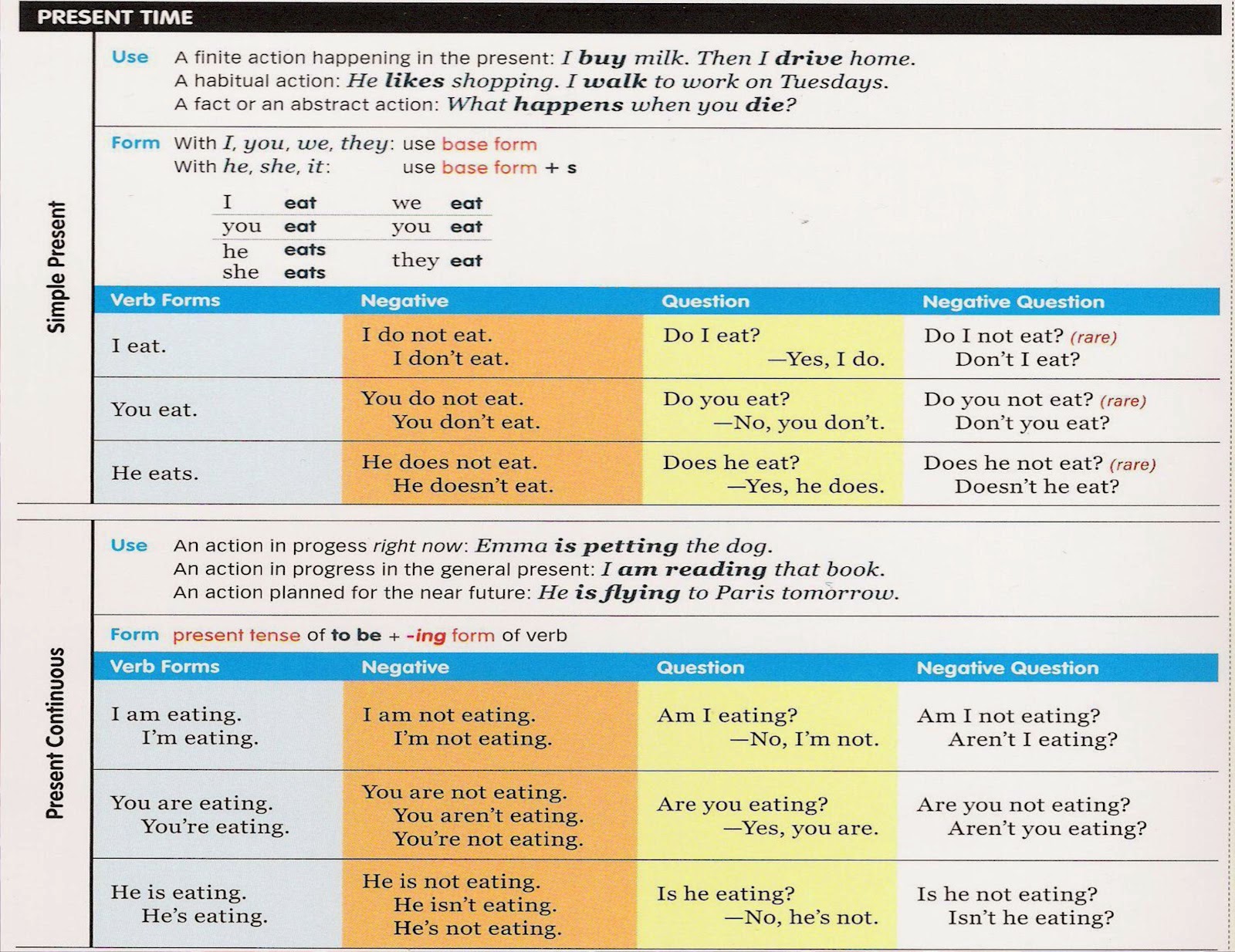
Present Perfect Simple Vs Continuous
The simple tense is a grammatical aspect that refers to the normal forms of the past, present, and future tenses—nothing fancy! Unlike the other aspects, it doesn't add any new information. True to its name, simple tenses are the easiest to form and have the fewest rules. Perfect tense

In plain English PRESENT PERFECT CONTINUOUS
In fact, the verb forms past simple, past continuous, past perfect simple and past perfect continuous are collective sometimes known as 'narrative tenses'. However, when we are recounting a story in a more informal setting (such as telling a joke or a sharing an anecdote), we can use present forms to give a sense of immediacy and to bring the.

Exercises Past Simple Present Perfect Continuous. Perfect (Grammar
Level: beginner The present continuous is made from the present tense of the verb be and the -ing form of a verb: We use the present continuous to talk about: activities at the moment of speaking: I'm just leaving work. I'll be home in an hour. Please be quiet. The children are sleeping. Present continuous 1 Present continuous 2
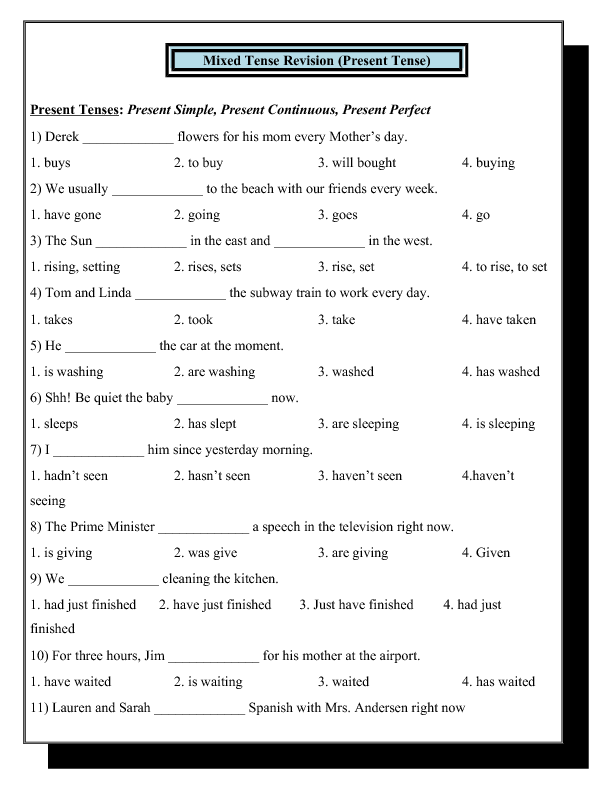
Mixed Tense Revision (Present Tenses Present Simple, Present
Present Simple, Present Continuous, Present Perfect. ErikaJKS 16295 141 76 0 1/1 Let's do English ESL general grammar practice. It is created to revise Present Simple, Present Continuous, Present Perfect. This file includes State verbs and s…

Present simple + Present continuous
Present Perfect Tenses: Simple vs. Continuous - Video Download PDF In this lesson, you can learn about the present perfect simple and present perfect continuous verb forms. What's the difference between 'I have done' and 'I have been doing?' When should you use the present perfect continuous? You'll see the answers to these questions in this class.

Present Perfect Simple and continuous Грамматика, Рабочие тетради
Present perfect simple - Use Grammar chart. Download full-size image from Pinterest. We use the present perfect simple with past finished actions or experiences when we don't mention or we don't know when they happened. And we also use the present perfect simple to ask or talk about situations that started in the past and have not finished..
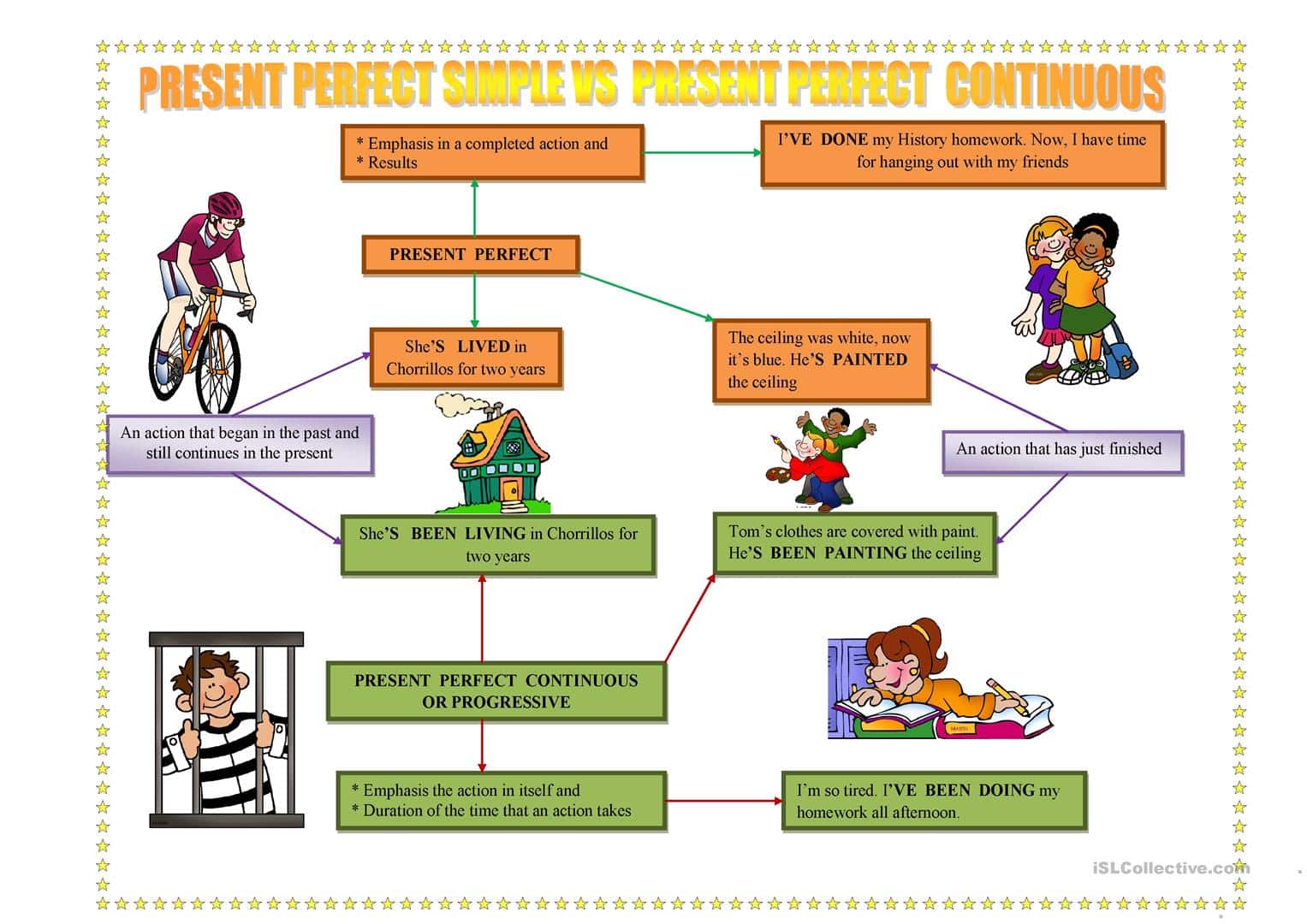
Test Engleski jezik Osmi razred Present perfect simple and
Perfect English Grammar What's the difference? Download this page in PDF Remember: We use the present simple with stative verbs. We can't use any continuous tense (including the present continuous tense, of course) with stative verbs. Click here for more information about the present simple tense

English Tenses Present Perfect Simple vs. Present Perfect Continuous
The present perfect continuous (also known as the present perfect progressive) is a verb tense used to talk about something that started in the past and is continuing at the present time. I have been reading War and Peace for a month now. In this sentence, using the present perfect continuous conveys that reading War and Peace is an activity.

Present Simple, Present Continuous, Present Perfect, Past Simple
Present Simple, Present Continuous or Present Perfect Mixed Verb Tense Forms in the Present - B1 Intermediate Level Multiple Choice Exercise Complete the gaps in the sentences by choosing the correct form of the PRESENT SIMPLE, PRESENT CONTINUOUS or PRESENT PERFECT. Use the Present Simple: For present habits & routines, facts and regular actions.
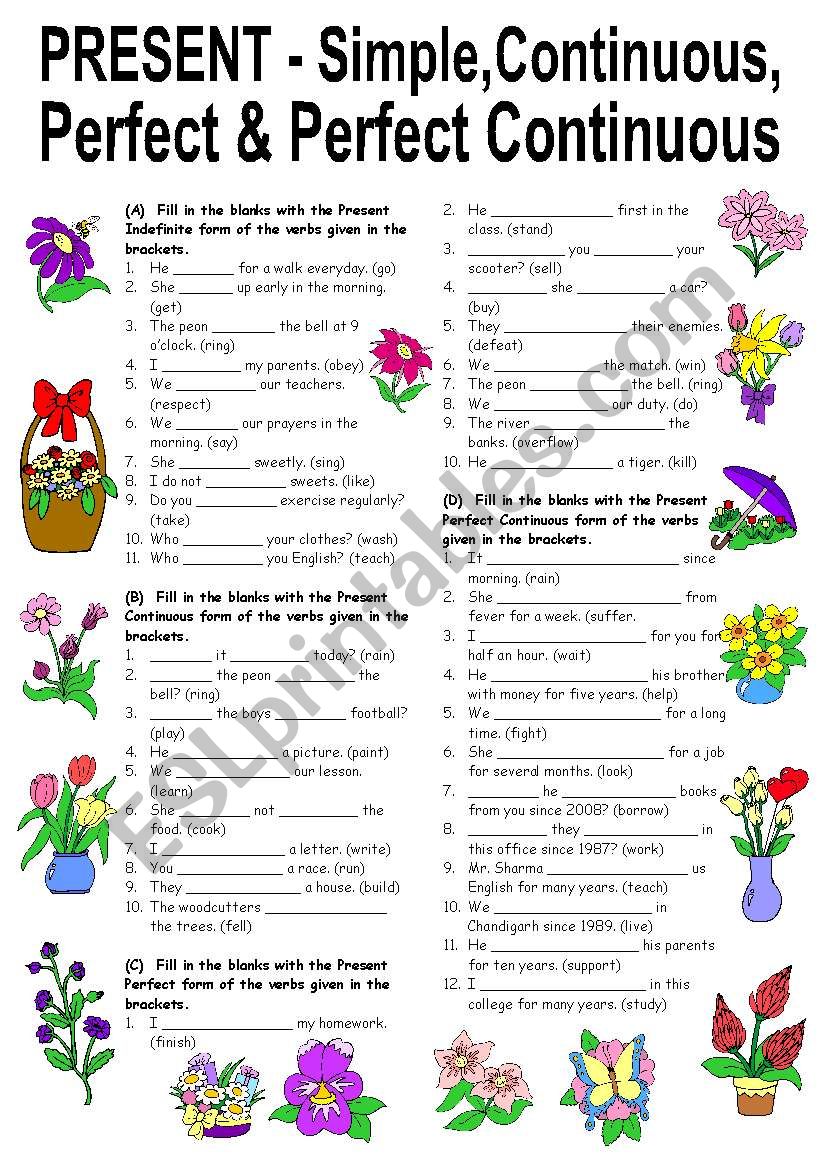
Present Perfect Simple or Present Perfect Continuous Exercise 3
The present perfect continuous is a verb tense used to refer to an action that started sometime in the past and is still ongoing. It also sometimes describes an action that was just completed, as long as it's still relevant to the present (e.g., "I've been working hard all day, and now I'm getting some rest").
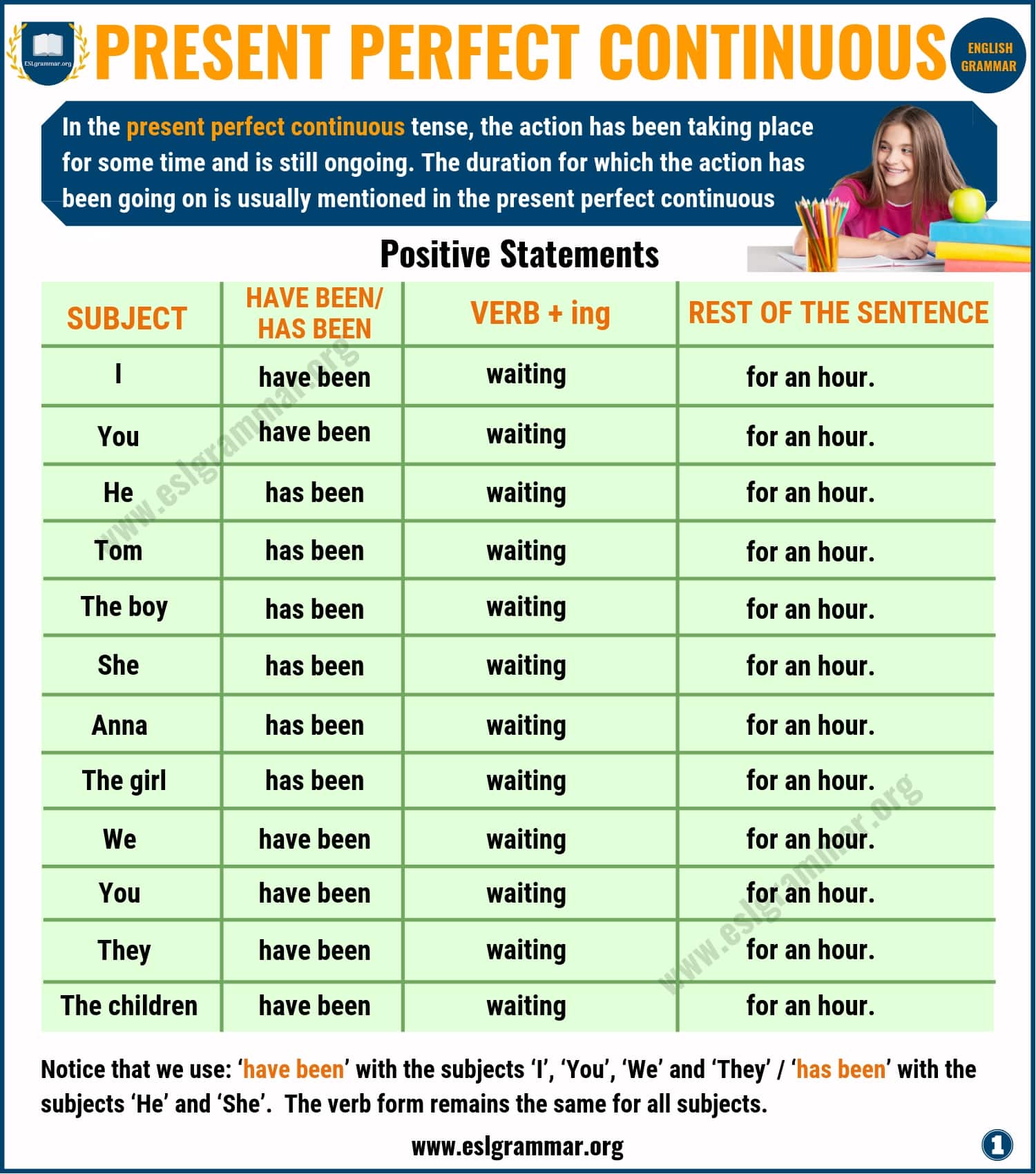
Present Perfect Continuous Tense Definition, Useful Examples
Present perfect and past simple 2. GapFillTyping_MTYzMTc= Level: intermediate. Present perfect continuous. The present perfect continuous is formed with have/has been and the -ing form of the verb. We normally use the present perfect continuous to emphasise that something is still continuing in the present: She has been living in Liverpool all.